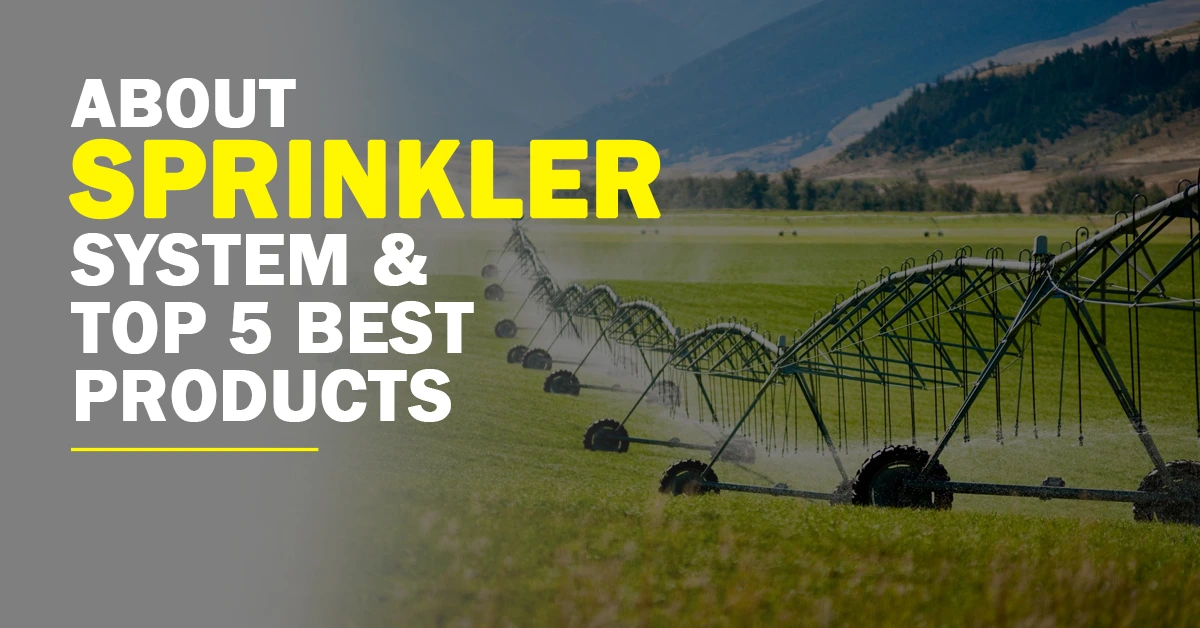
Table of Contents
ToggleAbout Sprinkler System
A sprinkler system is an automated irrigation system designed to distribute water efficiently and evenly across landscapes, such as lawns, gardens, or agricultural fields. They are commonly used in residential, commercial, and agricultural settings to maintain the health and appearance of green spaces, as well as to conserve water resources. Sprinkler systems can vary in size and complexity, depending on the specific needs and requirements of the area being irrigated.
Components of a Sprinkler System:
1. Controller: The controller is the "brain" of the sprinkler system. It is an electronic device that
allows you to program watering times, durations, and frequencies for different zones in your
landscape. Some controllers come with advanced features like weather-based adjustments,
smartphone connectivity, and remote control access.
2. Valves: Valves control the flow of water to individual zones in the sprinkler system. They
open or close based on the commands from the controller, allowing water to flow to the
designated area.
3. Pipes: Pipes transport water from the main water source to the sprinkler heads. They are
typically made of PVC, polyethylene, or copper and are buried underground to protect them
from damage and to maintain the aesthetics of the landscape.
4. Sprinkler Heads: Sprinkler heads are devices that distribute water over the landscape. They
come in various types, including pop-up spray heads, rotors, and drip emitters, each
designed to deliver water at different rates and patterns to suit the needs of the plants and
the landscape.
5. Backflow Preventer: A backflow preventer is a crucial safety component that prevents
contaminated water from flowing back into the main water supply. It is usually installed
between the main water source and the sprinkler system.
6. Pressure Regulator: A pressure regulator ensures that the water pressure in the system is
maintained at an optimal level. This helps prevent damage to the sprinkler heads and
ensures even water distribution.
7. Rain Sensor: A rain sensor is an optional but recommended component that detects rainfall
and automatically pauses the irrigation system during rain events. This helps conserve water
and prevents the over-watering of the landscape.
To install a sprinkler system, it is essential to plan the layout carefully, taking into account factors like
the size and shape of the landscape, the types of plants, soil conditions, and local climate. Proper
maintenance, such as regular inspections, cleaning, and winterization, is necessary to ensure the
long-term performance and efficiency of the system.
Use Of Sprinkler System
The use of a sprinkler system offers numerous benefits for maintaining landscapes, promoting plant
growth, and conserving water resources. Some of the primary uses and advantages of sprinkler
systems are:
1. Efficient Watering: Sprinkler systems deliver water directly to the areas where it is needed,
which reduces water waste and ensures even coverage. This is particularly beneficial in
regions with water scarcity or during drought conditions.
2. Time-Saving: With an automated sprinkler system, manual watering tasks become a thing of
the past. The system takes care of watering the landscape at preset times and durations,
freeing up time for other activities.
3. Customization: Sprinkler systems can be tailored to meet the specific watering needs of
different plants and landscape features. By dividing the landscape into zones, you can adjust
watering schedules and durations to suit the needs of each area, promoting healthy plant
growth.
4. Aesthetics: A well-maintained landscape enhances the curb appeal of a property. An
automatic sprinkler system ensures that lawns and gardens receive adequate water,
contributing to a lush, green, and attractive landscape.
5. Conservation: By using water efficiently and reducing runoff, sprinkler systems help
conserve water resources. Some systems come with advanced features like weather-based
adjustments or rain sensors, which further reduce water waste by adjusting or pausing the
watering schedule during rain events.
6. Plant Health: Consistent and appropriate watering is crucial for the health and growth of
plants. Sprinkler systems help maintain the right moisture levels in the soil, preventing
problems like root rot or dehydration.
7. Soil Preservation: Overwatering can cause soil erosion and nutrient leaching. Sprinkler
systems help maintain optimal soil moisture levels, preserving the structure and nutrient
content of the soil.
8. Reduced Weed Growth: By delivering water only where it is needed, sprinkler systems can
help minimize weed growth. Less water in the areas between plants means fewer
opportunities for weeds to take root and thrive.
In summary, sprinkler systems are a valuable tool for maintaining healthy and attractive landscapes,
saving time, and conserving water resources. By automating the watering process and ensuring even
coverage, these systems contribute to the overall health and vitality of lawns, gardens, and
agricultural fields.
Benefits Of Sprinkler System
Sprinkler systems offer numerous benefits for maintaining landscapes, promoting plant growth, and
conserving water resources. Some of the key advantages of using a sprinkler system are:
1. Water Efficiency: Sprinkler systems deliver water directly to the areas where it is needed,
ensuring even coverage and reducing water waste. This is particularly important in regions
with water scarcity or during drought conditions.
2. Time-Saving: Automated sprinkler systems eliminate the need for manual watering tasks,
freeing up time for other activities. The system takes care of watering the landscape at
preset times and durations.
3. Customization: Sprinkler systems can be tailored to meet the specific watering needs of
different plants and landscape features. By dividing the landscape into zones, you can adjust
watering schedules and durations to suit the needs of each area, promoting healthy plant
growth.
4. Aesthetic Appeal: A well-maintained landscape enhances the curb appeal of a property. An
automatic sprinkler system ensures that lawns and gardens receive adequate water,
contributing to a lush, green, and attractive landscape.
5. Water Conservation: Sprinkler systems help conserve water resources by using water
efficiently and reducing runoff. Some systems come with advanced features like weather-
based adjustments or rain sensors, which further reduce water waste by adjusting or
pausing the watering schedule during rain events.
6. Improved Plant Health: Consistent and appropriate watering is crucial for the health and
growth of plants. Sprinkler systems help maintain the right moisture levels in the soil,
preventing problems like root rot or dehydration.
7. Soil Preservation: Overwatering can cause soil erosion and nutrient leaching. Sprinkler
systems help maintain optimal soil moisture levels, preserving the structure and nutrient
content of the soil.
8. Reduced Weed Growth: By delivering water only where it is needed, sprinkler systems can
help minimize weed growth. Less water in the areas between plants means fewer
opportunities for weeds to take root and thrive.
In conclusion, sprinkler systems provide significant benefits for maintaining healthy and attractive
landscapes, saving time, and conserving water resources. By automating the watering process and
ensuring even coverage, these systems contribute to the overall health and vitality of lawns,
gardens, and agricultural fields.
Maintenance Of Sprinkler System
Proper maintenance of a sprinkler system is essential to ensure its long-term performance,
efficiency, and effectiveness. Regular inspection, cleaning, and winterization can help extend the life
of the system and prevent issues that may arise due to wear and tear or environmental factors. Here
are some key steps to maintain a sprinkler system:
1. Regular Inspection: Periodically inspect the entire sprinkler system, including the controller,
valves, pipes, and sprinkler heads. Check for signs of damage, leaks, or clogged nozzles.
Make necessary repairs or replacements promptly to prevent further damage and maintain
system efficiency.
2. Cleaning Sprinkler Heads: Over time, dirt and debris can accumulate in sprinkler heads,
leading to clogs or inefficient water distribution. Regularly clean the sprinkler heads by
removing the nozzle and flushing it with water. Use a soft brush or toothpick to remove any
stubborn debris.
3. Adjusting Sprinkler Heads: Ensure that the sprinkler heads are properly adjusted and aligned
to provide even coverage and avoid watering non-landscape areas like sidewalks, driveways,
or buildings. Misaligned sprinkler heads can lead to over-watering or under-watering certain
areas.
4. Monitoring the Controller: Check the controller settings regularly to ensure that the
watering schedule is appropriate for the current season and weather conditions. Update the
settings as needed to accommodate changes in plant needs or local regulations.
5. Testing the Rain Sensor: If your system has a rain sensor, test its functionality periodically to
ensure it is working correctly. A properly functioning rain sensor will pause the irrigation
system during rain events, conserving water and preventing over-watering.
6. Inspecting the Valves: Check the valves for any signs of leaks, damage, or malfunction. Clean
the valve components as needed and replace any worn or damaged parts.
7. Winterization: In colder climates, it is important to winterize the sprinkler system before the
first freeze. This process involves draining all the water from the pipes, valves, and sprinkler
heads to prevent damage caused by freezing and expanding water. In some cases, it may be
necessary to use compressed air to blow out any remaining water.
8. Spring Startup: At the beginning of the irrigation season, gradually and carefully turn the
water back on, inspecting the system for any damage that may have occurred over the
winter. Make any necessary repairs and adjust the controller settings for the new season.
By following these maintenance steps, you can help ensure the long-term performance and
efficiency of your sprinkler system, ultimately conserving water, saving time, and maintaining a
healthy and attractive landscape.
Components Of The Sprinkler System
A sprinkler system consists of several components that work together to efficiently distribute water across landscapes, such as lawns, gardens, or agricultural fields. The main components of a sprinkler system include:
- Controller: The controller is the “brain” of the sprinkler system. It is an electronic device that allows you to program watering times, durations, and frequencies for different zones in your landscape. Some controllers come with advanced features like weather-based adjustments, smartphone connectivity, and remote control access.
- Valves: Valves control the flow of water to individual zones in the sprinkler system. They open or close based on the commands from the controller, allowing water to flow to the designated area.
- Pipes: Pipes transport water from the main water source to the sprinkler heads. They are typically made of PVC, polyethylene, or copper and are buried underground to protect them from damage and to maintain the aesthetics of the landscape.
- Sprinkler Heads: Sprinkler heads are devices that distribute water over the landscape. They come in various types, including pop-up spray heads, rotors, and drip emitters, each designed to deliver water at different rates and patterns to suit the needs of the plants and the landscape.
- Backflow Preventer: A backflow preventer is a crucial safety component that prevents contaminated water from flowing back into the main water supply. It is usually installed between the main water source and the sprinkler system.
- Pressure Regulator: A pressure regulator ensures that the water pressure in the system is maintained at an optimal level. This helps prevent damage to the sprinkler heads and ensures even water distribution.
- Rain Sensor: A rain sensor is an optional but recommended component that detects rainfall and automatically pauses the irrigation system during rain events. This helps conserve water and prevents the over-watering of the landscape.
These components work together to create an efficient and effective sprinkler system that meets the specific needs and requirements of the area being irrigated. Proper installation and maintenance of these components are crucial for the long-term performance and efficiency of the system.
Buying Guides Of Sprinkler Systems
When purchasing a sprinkler system, there are several factors to consider to ensure that you select a system that meets your needs and fits your budget. Here are some key buying guides for sprinkler systems:
- Landscape Size and Shape: The size and shape of your landscape will determine the number of zones, sprinkler heads, and pipe length required. Measure the area to be irrigated and choose a system that can accommodate it.
- Water Source: Ensure that your sprinkler system can be connected to an adequate water source. Consider the water pressure and flow rate available to avoid damage to the sprinkler heads and ensure even water distribution.
- Sprinkler Head Type: Select the type of sprinkler heads that are appropriate for your landscape and plant needs. Different types of sprinkler heads deliver water at different rates and patterns, and some may be more suitable for certain plants or soil types.
- Controller Features: Look for a controller that offers advanced features like weather-based adjustments, smartphone connectivity, or remote control access. These features can save time and improve the efficiency of the system.
- Cost: Determine your budget for a sprinkler system and choose a system that fits within that budget. Consider the cost of installation, maintenance, and repairs when making your decision.
- Installation and Maintenance: Ensure that the system you choose is easy to install and maintain. Look for systems that come with clear instructions and are easy to access for repairs and maintenance.
- Warranty and Customer Support: Choose a system from a reputable manufacturer that offers a warranty and good customer support. This can provide peace of mind and ensure that you receive timely assistance if you encounter any issues with the system.
By considering these factors, you can make an informed decision when purchasing a sprinkler system that meets your needs, budget, and landscape requirements.
Top 5 Best Sprinklers
1. Keten Impact Sprinkler
Features
- Package Include 1pcs brass impact sprinkler, 1pcs tripod base, 1*Teflon tape.
- The head is made of heavy duty brass which can rotate freely for nearly 360 degrees as your will
- The tripod base can be extended 16 – 37” high and locked securely into place with a quick released leg clips.
- Perfect for patio, lawn, garden, greenhouse, flower bed, cooling irrigation etc.
2. YAMATIC Impact Sprinkler
Features
- Composed of a HEAVY-DUTY METAL base and Impact Sprinkler Head to prevent rust, corrosion
- Cover over 5,500 square feet. Area coverage up to 70 feet (22m) in diameter
- Adjustable from full to part circle(from 20° to 360° coverage).
- The Residential Adjustable Telescoping Tripod Stand adjusts in 3 stages from 25″ – 48″ in height.
3. Orbit 62120 Sprinkler
Features
- 120-degree sensor with night only, day only, and always on activation modes
- Intelligent sensing technology for optimum water and battery conservation
- 35-foot adjustable impact sprinkler and 30-minute timed watering setting
- Over 7,500 activation cycles on just 4 AA alkaline batteries
4. Chapin 4993 Sprinkler
Features
- Wide range: 20 to 35-foot radius and 360° adjustable spray
- Sturdy construction: brass components, metal body and weighted legs
- Adjustable height: set from 22 to 48 inches based on application area
- Less tangles: gooseneck hose attachment keeps the hose between the sprayer legs, fits standard garden hoses
1. Eden Impact Sprinkler
Features
- Circular coverage ranges from 5 degrees to 360 degrees
- Misting system is ideal for cooling down small areas during hot summer days
- Backed by Eden’s limited 2-year warranty
- Waters up to 78 ft. (24 m) in diameter (4,860 sq. ft, 452 sq. m) with the large spray pattern at 40 psi

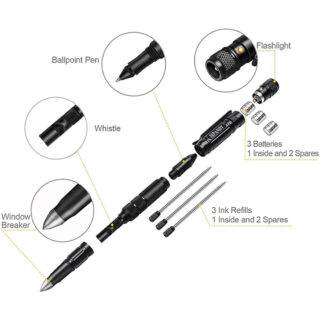
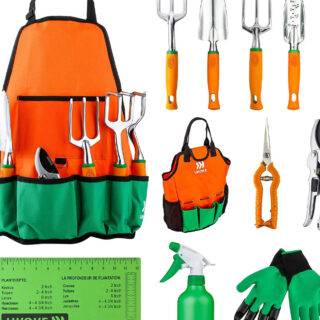

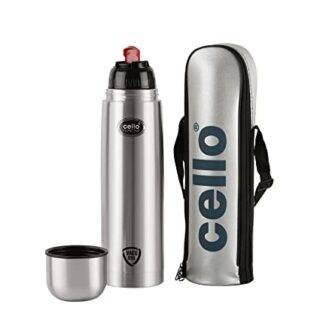
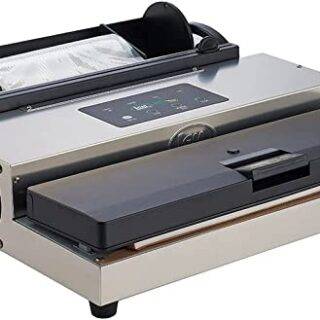





Leave a Reply